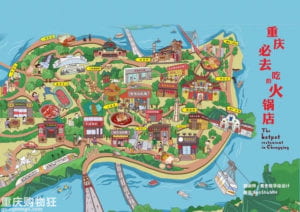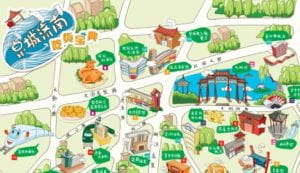In the article “The Agency of Mapping: Speculation, Critique and Invention”, James Corner believes that “mappings discover new worlds within past and present ones; they inaugurate new grounds upon the hidden traces of a living context.” It means that mapping gives more meanings to the real object. It connects the relationship between space and time. Maps are different from mappings. Maps could be part of mapping, but mapping can have more meanings. For example, traditional maps are used to find geographical locations. From print maps to GPS maps, we use those maps to create a God’s view that narrows the space between different roads and blocks. However, today’s maps are not just about finding places, but “actualizing the potential”, finding what’s behind the reality.

Mapping is not tracing or maps but a new way of representation. Many cities today love to create food maps that explore the potential of the city. For example, Chongqing is famous for hotpot and street food. Therefore, many artists start to create maps that highlight famous hotpot restaurants in the city. Those maps are not traditional maps that created through scientific grouping, but a new way of mapping. Just as Corner says “Mappings have agency because of double-sided characteristic of all maps.” First, food mappings record the surface of the earth as direct impressions such as streets, walks and the basic structure of the city. It is projected onto paper through geometrical lines and points, but it creates spatial imagination. On the other side, mappings are also abstract. Although they create specific lines and routes where you can follow, but they only reveal one version of the surface. For food mappings, creators only highlight restaurants that they believe it’s worth to mention or worth to go, but excludes other restaurants. Even if creators list all restaurants or street food in maps, it’s still abstract maps that reveal different imaginations. “It is doubly projective: it both captures the projected elements off the ground and projects back a variety of effects through use.”

After reading articles related to mapping, I ask myself why do we need food maps? If viewers want to find nice restaurants, they can research on Google and Baidu, or they can find on Yelp and Da Zhong Dian Ping. If finding nice restaurants is not the function of food mappings, then why do we need them? From my point of view, I believe it’s a new way of discovering the ecosystem of food, to view food from a different view and to connect space and time. If we compare Thai food in Da Zhong Dian Ping and food maps in JingAn area, the app may list several Thai food restaurants vertically, but food maps will map out all choices. Mapping extends the potential and viewers may find new things that’s beyond their original expectations.
Leave a Reply